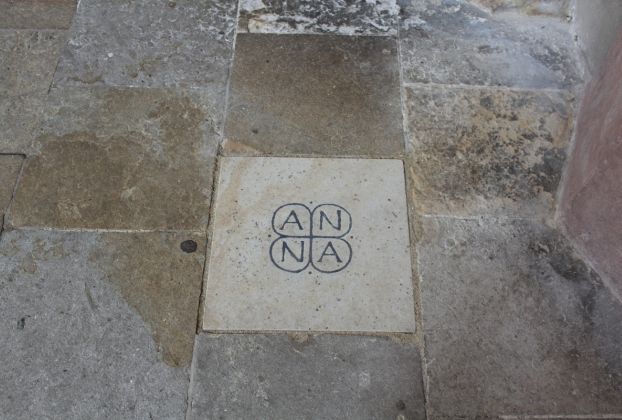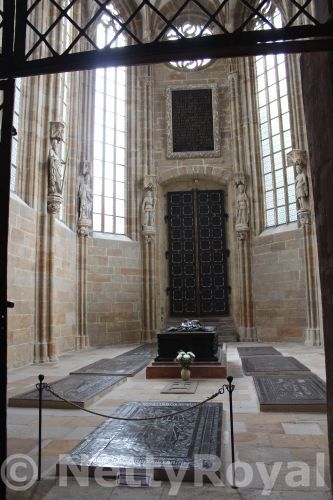Only 439 years after her death Anna Duchess of Saxony (1544-1577) has gotten a kind of gravestone. For many years Dutch visitors asked in the Dom of Meissen, Germany, where they could find her grave. On 9 February 2017 the Dombau-Verein Meissen e.V. finally decided to mark the graves, not only Anna’s, but also the one of Bishop Benno, who died in 1106. He had been the 10th bishop of Meissen between 1066 and 1106 and probably was a member from a countal family. Benno was canonized in 1523, and was the first Saxon Saint. His grave was demolished in 1539 as a result of the Reformation and in 1580 his remaining bones were transfered to the Frauenkirche in Munich. This year an exhibition about him can be visited in the Albrechtsburg in Meissen, next to the Dom Church.

A simple stone with the name Anna now can be found on the floor of the Fürstenkapelle (Princely Chapel) in the Dom Church of Meissen. Some information in German and Dutch can be found near the stone. Old documents show that she was buried in this chapel.



But why did Anna never have a gravestone?
Anna was born in Dresden on 23 December 1544 as the only surviving child of Elector Moritz of Saxony and his wife Agnes, a Hessian Princess. She is said to have had somewhat uneven shoulders and might have walked with a limp. Her parents probably spoiled her. She was however a wealthy heiress and there were quite a few candidates who’d like to marry her. In August 1561 she married – as his second wife – William Prince of Orange (1533-1584). They had five children, but only three of them, Anna, Maurits and Emilia survived.
After the death of her first son in 1566 she suffered of depressions, tried to commit suicide, started drinking heavily. When being pregnant of her daughter Emilia she moved to Germany. In June 1570 William and Anna settled in Siegen, Germany. However Anna soon started an affair with Jan Rubens (the father of the famous painter Peter Paul Rubens) and became pregnant again. Her daughter Christine was born in August 1571, and was never recognized as his child by William. In December 1571 Anna and William separated and later divorced.
Also the Saxon and Hessian families didn’t accept Anna, as she was now an adulteress. In October 1572 they had Anna imprisoned at Beilstein castle, the first three years her daughter Christine joined her. In December 1576 she was moved to Dresden where she stayed in a room with walled up windows and iron bars. There was only a hole in the door through which she was served her food. There was no way to escape. She died on 18 December 1577, after having suffered of hemorrhaging for several months. The family decided to bury her between her catholic ancestors, anonymously. Her parents, who turned into protestants during the Reformation, were buried in Freiberg.

There is also a fascinating new book about her: “Anna of Saxony: The Scarlet Lady of Orange” (2017), by Ingrun Mann.
I know, but haven’t seen or read it yet.
https://www.historyofroyalwomen.com/anna-of-saxony/anna-saxony-scarlet-lady-orange-ingrun-mann-book-review/
Notice online there are also several German publications, some published in recent years.